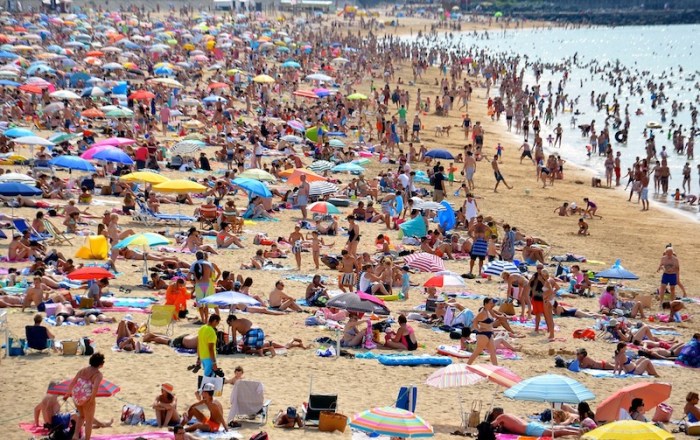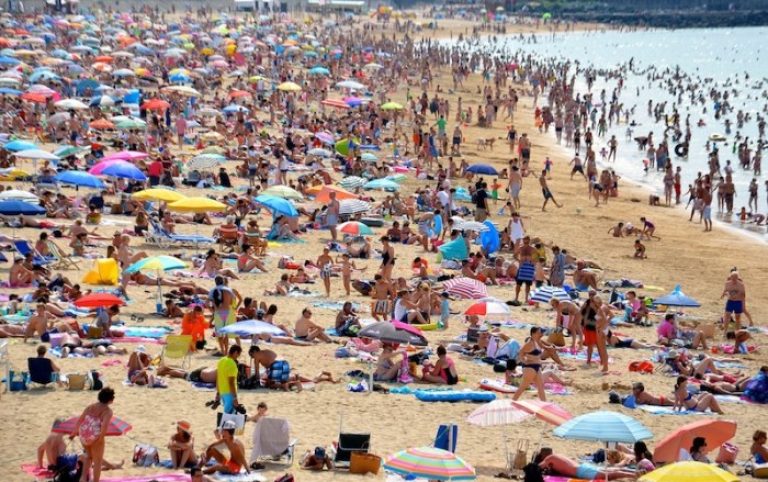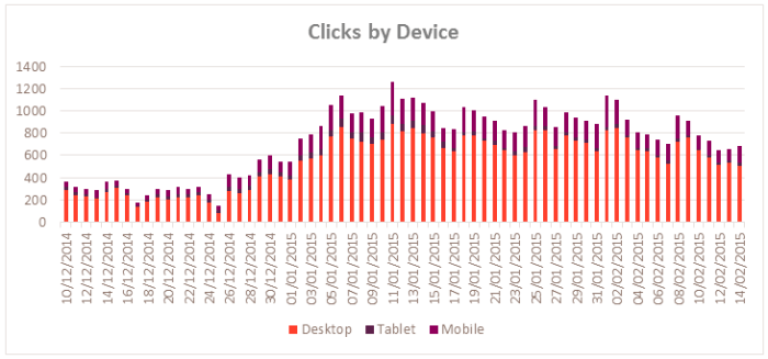Busiest travel day of the year – it sounds chaotic, right? This day, often falling around major holidays or school breaks, sees a massive surge in travel across all modes of transportation. We’ll dive into what makes this day so uniquely busy, exploring the data behind it, the factors contributing to the peak, and how it impacts everything from airport security lines to highway traffic.
From analyzing historical trends and various metrics like flight bookings and highway congestion to understanding the influence of holidays and economic factors, we’ll uncover the complexities behind identifying the single busiest day. We’ll also explore geographic variations in peak travel, comparing urban and rural patterns and examining the strain on infrastructure and services during these high-demand periods. Finally, we’ll look towards the future, predicting how evolving travel patterns and technological advancements might reshape the busiest travel day in years to come.
Impact on Infrastructure and Services

The busiest travel day of the year puts immense pressure on various infrastructure systems and the service providers that rely on them. The sheer volume of travelers simultaneously utilizing transportation networks and seeking accommodations and services creates significant challenges across the board, impacting everything from flight schedules to highway traffic flow.Airports, highways, and train systems experience a dramatic surge in demand during peak travel periods.
This leads to significant strain on their operational capacity. The resulting congestion can cause delays, cancellations, and disruptions for travelers, ultimately impacting their overall travel experience. Service providers, such as airlines, hotels, and rental car companies, also face immense pressure to meet the unexpectedly high demand. This often leads to increased prices, limited availability, and potential service disruptions.
Efficient management of these heightened demands is crucial for minimizing negative impacts on travelers and maintaining the smooth functioning of the transportation ecosystem.
Strain on Transportation Infrastructure
The increased passenger and vehicle volume on the busiest travel day leads to significant congestion at airports, causing delays in check-in, security screenings, and boarding. Highways become heavily congested, resulting in slower travel times and increased fuel consumption. Similarly, train systems face overcrowding, potentially leading to delays and cancellations. For example, during Thanksgiving in the United States, major airports like Hartsfield-Jackson Atlanta International Airport often experience significant delays due to the sheer number of passengers.
Similarly, major highways leading to and from popular holiday destinations see massive traffic jams, sometimes extending for miles. These bottlenecks underscore the need for proactive planning and resource allocation by transportation authorities.
Challenges Faced by Service Providers
Airlines grapple with managing a large influx of passengers, potentially leading to overbooked flights and delays. Hotels experience high occupancy rates, resulting in limited room availability and often inflated prices. Rental car companies may face shortages of available vehicles, forcing customers to accept less desirable options or pay premium prices. The increased demand necessitates meticulous scheduling and resource management by these service providers to minimize disruption and ensure customer satisfaction.
For instance, airlines might employ strategies like adding extra flights or adjusting schedules to accommodate the increased demand. Hotels might implement dynamic pricing strategies to manage occupancy rates and maximize revenue.
Strategies to Mitigate Congestion, Busiest travel day of the year
Transportation authorities employ various strategies to mitigate congestion and improve efficiency during peak travel times. These include improved traffic management systems, such as real-time traffic monitoring and adaptive traffic signal control. Increased public transportation options, such as expanding train services and improving bus routes, can help alleviate pressure on highways. Coordination between different transportation modes, such as integrating airport shuttle services with public transportation, can improve the overall travel experience.
Furthermore, initiatives to encourage off-peak travel or staggered travel times can help distribute the travel demand more evenly throughout the day, thus reducing congestion during peak hours. For example, many cities implement special bus routes and increase train frequency during peak holiday travel periods. These proactive measures help ensure smoother traffic flow and minimize disruptions for travelers.
Future Predictions and Trends: Busiest Travel Day Of The Year

The busiest travel day of the year is a dynamic phenomenon, constantly shifting based on evolving travel patterns and technological advancements. Understanding these trends is crucial for infrastructure planning and service provision to ensure smooth travel experiences for everyone. Predicting future peak travel days requires analyzing current trends and anticipating the impact of emerging technologies and socio-economic factors.Predicting future peak travel days involves considering several interconnected factors.
The rise of budget airlines, for instance, has democratized air travel, leading to increased passenger numbers and potentially shifting peak travel days to include more off-peak seasons or weekdays. Similarly, the popularity of ride-sharing services has impacted ground transportation, potentially influencing the timing and volume of travel during peak periods. These shifts, combined with larger societal events, will influence the future.
Evolving Travel Patterns and Peak Travel Days
The increased accessibility of air travel due to budget airlines has already resulted in a more distributed travel pattern throughout the year. Instead of a single, sharply defined peak day, we are likely to see a broader peak season, perhaps even multiple smaller peaks spread throughout the year. This is further complicated by the rise of ride-sharing services, which offer more flexible travel options and can potentially alleviate some congestion at traditional peak times, but also might create new congestion points.
For example, the Thanksgiving holiday in the US, traditionally a single-day peak, might see a more extended peak period, with increased travel volume on the days surrounding the holiday, as budget travel options make it easier to travel a few days earlier or later.
Projection of Future Busiest Travel Days
Projecting future busiest travel days requires considering anticipated major events. For example, large-scale sporting events like the Olympics or FIFA World Cup invariably cause significant spikes in travel. Similarly, major political gatherings or festivals can dramatically increase travel demand in specific regions. Based on current trends, we might anticipate a shift from a single “busiest day” towards a more extended period of high travel volume.
This shift could be influenced by the timing of major events and the continued growth of budget travel options. For example, instead of one day being the busiest, we might see a week or even a month where travel volumes are consistently high.
Technological Advancements and Travel Patterns
Technological advancements hold the potential to significantly reshape future travel patterns and peak days. The introduction of autonomous vehicles could streamline transportation, potentially reducing congestion and optimizing travel times. The hypothetical implementation of hyperloop technology, offering high-speed point-to-point travel, could drastically alter travel distances and timing, potentially creating new peak travel periods or even eliminating some existing ones. For instance, if a hyperloop connects two major cities, the travel time between them might be drastically reduced, potentially shifting the peak travel days for those cities and even impacting the travel patterns of nearby regions.
The effect on peak travel days would depend heavily on the implementation and adoption rate of such technologies.
So, while pinpointing the absolute “busiest” travel day remains a challenge due to data limitations and regional differences, understanding the factors that contribute to these peak travel periods is crucial. By analyzing historical trends, considering the influence of holidays and economic conditions, and anticipating future travel patterns, we can better prepare for and manage the challenges posed by these high-demand travel days.
From improved infrastructure planning to more efficient service provision, understanding this annual surge in travel is key to smoother journeys for everyone.
Quick FAQs
What are some common misconceptions about the busiest travel day?
Many assume it’s always the same date each year, but it varies based on factors like holiday scheduling and economic conditions.
How is the “busiest” day actually determined?
There’s no single, universally accepted method. Different organizations use various metrics (flight bookings, highway traffic, etc.), leading to varying results.
What can travelers do to prepare for the busiest travel day?
Book flights and accommodations well in advance, allow extra travel time, and consider alternative transportation options.
Does weather affect the busiest travel day?
Absolutely. Severe weather can significantly impact travel volume, potentially shifting the busiest day or causing major delays.


